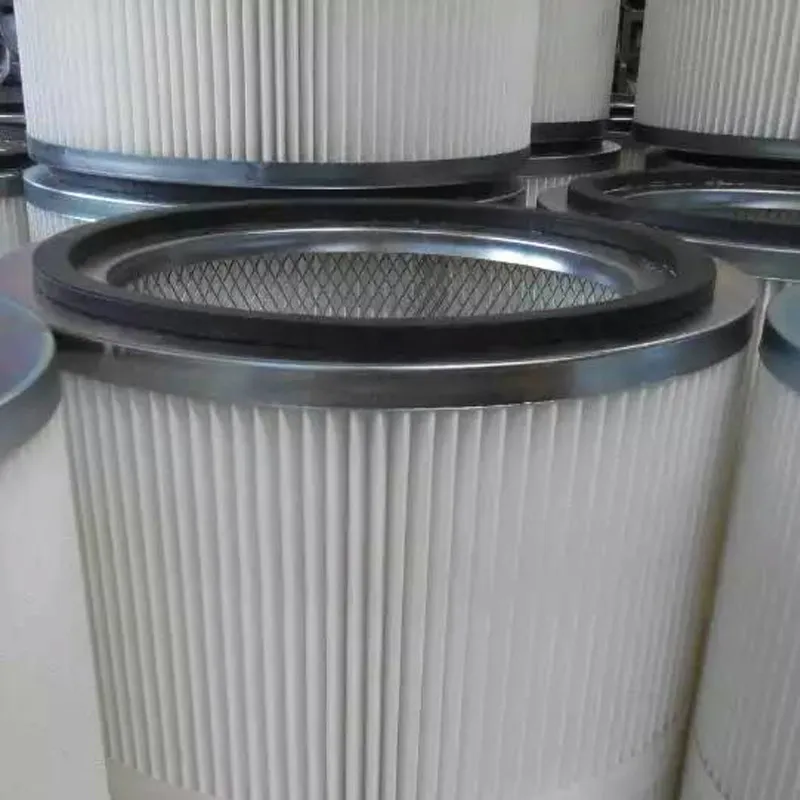 Tel:
+8618931101301
Tel:
+8618931101301
8 月 . 16, 2024 16:16 Back to list
Static Control Filter Component for Enhanced Performance and Protection
Understanding Antistatic Filter Elements Importance and Applications
In various industrial and technological settings, the management of static electricity is crucial for ensuring safety, product integrity, and operational efficiency. Antistatic filter elements play a vital role in this regard, providing a barrier against particulate contamination while minimizing the risks associated with static charge buildup.
What are Antistatic Filter Elements?
Antistatic filter elements are specialized filtration devices designed to prevent the accumulation of static electricity on their surfaces. These filters are typically made from materials that possess conductive or dissipation properties, allowing them to safely discharge static electricity. The primary function of these elements is to filter out airborne particles, dust, and contaminants while preventing the electrostatic discharge (ESD) that can lead to equipment damage, fire hazards, or explosions in sensitive environments.
Importance in Industrial Applications
1. Safety In industries such as pharmaceuticals, electronics, and oil and gas, static electricity can be a significant safety hazard. Antistatic filter elements help mitigate the risk of ignition or explosion caused by static discharges when handling flammable substances. By ensuring that static charges do not build up on the filter surface, these elements contribute to a safer working environment.
2. Product Integrity In manufacturing processes, especially for electronic components, static electricity can damage sensitive components. Antistatic filters prevent particle penetration, which can cause defects in products. The integration of antistatic features in these filters ensures that the production process remains free from contamination that could compromise product quality.
antistatic filter element

3. Efficiency Maintaining a controlled environment is essential for many industries. Antistatic filter elements help in managing air quality by controlling particulate matter. This contributes to operational efficiency, as clean air systems require less energy to maintain optimal performance. Moreover, regular replacement or maintenance of antistatic filters ensures that machinery operates smoothly, reducing downtime and maintenance costs.
Applications of Antistatic Filter Elements
1. Cleanrooms In cleanroom environments, where precision and cleanliness are paramount, antistatic filter elements are widely used. They help maintain the desired level of air cleanliness while preventing static buildup that can disrupt sensitive equipment or processes.
2. Pharmaceutical Manufacturing The pharmaceutical industry often involves the processing of volatile compounds. Antistatic filters in this sector are essential for preventing any electrostatic discharge that could ignite flammable vapors, ensuring the safety and integrity of the products being manufactured.
3. Electronics Manufacturing The production of electronic devices and components relies heavily on antistatic measures. Antistatic filters protect against the accumulation of dust and particles that could harm delicate circuitry, ensuring that the final products meet stringent quality standards.
Conclusion
Antistatic filter elements are indispensable components in many industrial applications, ensuring safety, efficiency, and product integrity. As technology continues to advance and industries demand higher standards of cleanliness and safety, the importance of these specialized filters will only increase. Investing in high-quality antistatic filter elements is crucial for any organization looking to minimize risks associated with static electricity while maintaining a clean and efficient operational environment. Understanding their role and benefits can lead to better decision-making when it comes to filtration systems in sensitive and demanding environments.
-
How to choose a high-efficiency air filter? Here comes a professional guideNewsOct.21,2024
-
Air filter: multi-field application, protecting fresh airNewsOct.17,2024
-
Carbon air filter: a green guard to protect air qualityNewsOct.16,2024
-
Can activated carbon completely remove indoor odors and pollutants in air purification?NewsOct.14,2024
-
How to filter air efficiently and ensure indoor air quality?NewsOct.12,2024
-
Activated carbon filter: the invisible guard of clean water lifeNewsOct.11,2024

 Email:
Email:





